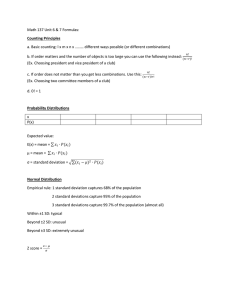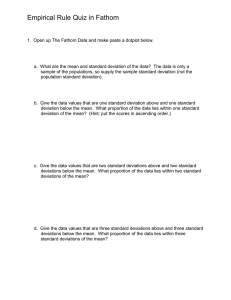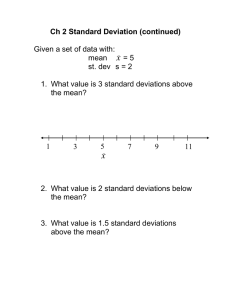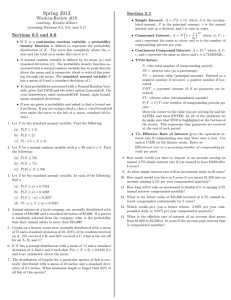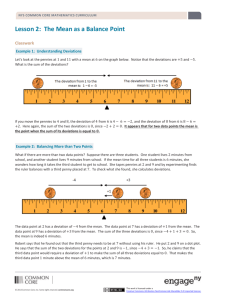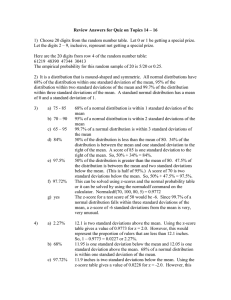Cheat Sheet 2
advertisement
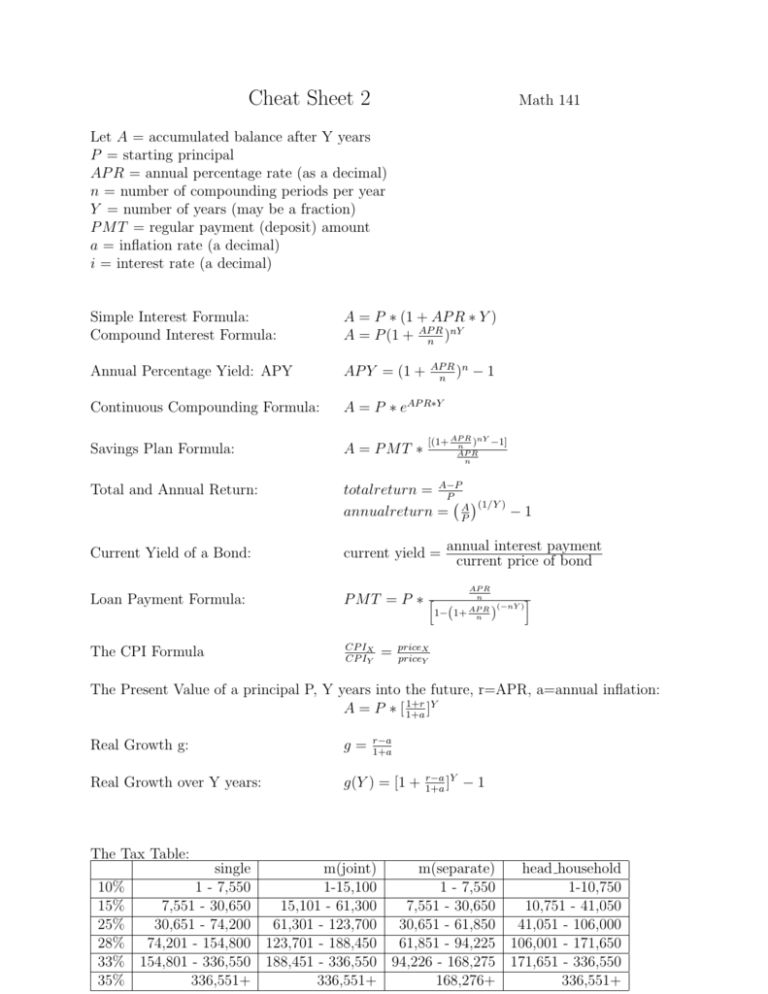
Cheat Sheet 2 Math 141 Let A = accumulated balance after Y years P = starting principal AP R = annual percentage rate (as a decimal) n = number of compounding periods per year Y = number of years (may be a fraction) P M T = regular payment (deposit) amount a = inflation rate (a decimal) i = interest rate (a decimal) Simple Interest Formula: Compound Interest Formula: A = P ∗ (1 + AP R ∗ Y ) A = P (1 + APn R )nY Annual Percentage Yield: APY AP Y = (1 + Continuous Compounding Formula: A = P ∗ eAP R∗Y Savings Plan Formula: A = P MT ∗ Total and Annual Return: totalreturn = A−P P (1/Y ) −1 annualreturn = PA Current Yield of a Bond: current yield = Loan Payment Formula: P MT = P ∗ The CPI Formula CP IX CP IY = AP R n ) n −1 R nY ) −1] [(1+ AP n AP R n annual interest payment current price of bond AP R n » (−nY ) R 1−(1+ AP n ) – priceX priceY The Present Value of a principal P, Y years into the future, r=APR, a=annual inflation: 1+r Y A = P ∗ [ 1+a ] r−a 1+a Real Growth g: g= Real Growth over Y years: g(Y ) = [1 + r−a Y ] 1+a −1 The Tax Table: single m(joint) m(separate) head household 10% 1 - 7,550 1-15,100 1 - 7,550 1-10,750 15% 7,551 - 30,650 15,101 - 61,300 7,551 - 30,650 10,751 - 41,050 25% 30,651 - 74,200 61,301 - 123,700 30,651 - 61,850 41,051 - 106,000 28% 74,201 - 154,800 123,701 - 188,450 61,851 - 94,225 106,001 - 171,650 33% 154,801 - 336,550 188,451 - 336,550 94,226 - 168,275 171,651 - 336,550 35% 336,551+ 336,551+ 168,276+ 336,551+ n The mean of x1 , x2 , ...xn is µ = x1 +x2 +...+x . n 2 +(x −µ)2 +...+(x −µ)2 (x −µ) n 2 The variance s2 of x1 , x2 , ...xn is s2 = 1 . n−1 The standard deviation s is the square root of the variance s2 . Quartiles of Normal Distributions: Q1 = mean − .67 ∗ s Q3 = mean + .67 ∗ s The 68 − 95 − 99.7 Rule for normal distributions: 68% of the observations fall within 1 standard deviation of the mean. 95% of the observations fall within 2 standard deviations of the mean. 99.7% of the observations fall within 3 standard deviations of the mean. Given data (x1 , y1 ), (x2 , y2 ), ... (xn , yn ), with means µx , µy and standard deviations sx , sy . The correlation between variables x and y is r= 1 (n−1)sx sy [(x1 − µx )(y1 − µy ) + (x2 − µx )(y2 − µy ) + ... + (xn − µx )(yn − µy )] . The least squares regression line is where y = ax + b. a = r ∗ ssxy and b = µy − aµx . For a simple random sample of size n, count of successes in the sample the sample proportion of successes is p0 = n The mean of the sampling distribution is pq p(1−p) . and the standard deviation is n The 68 − 95 − 99.7 Rule applies here aswell.


